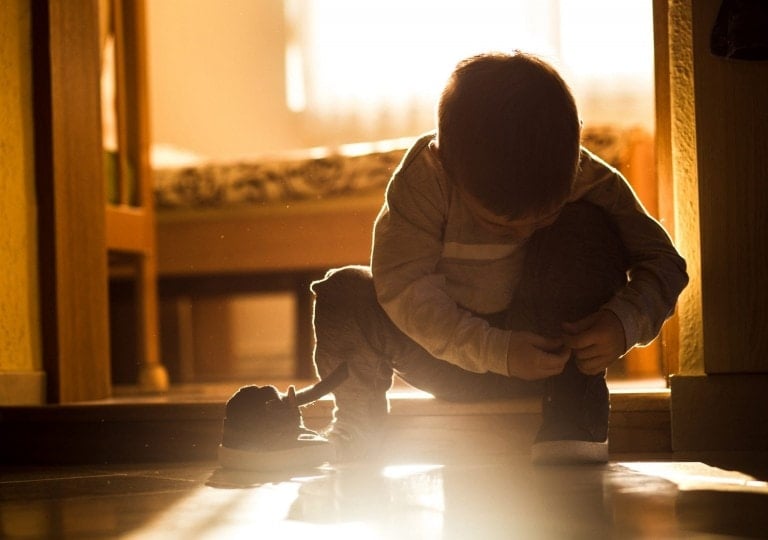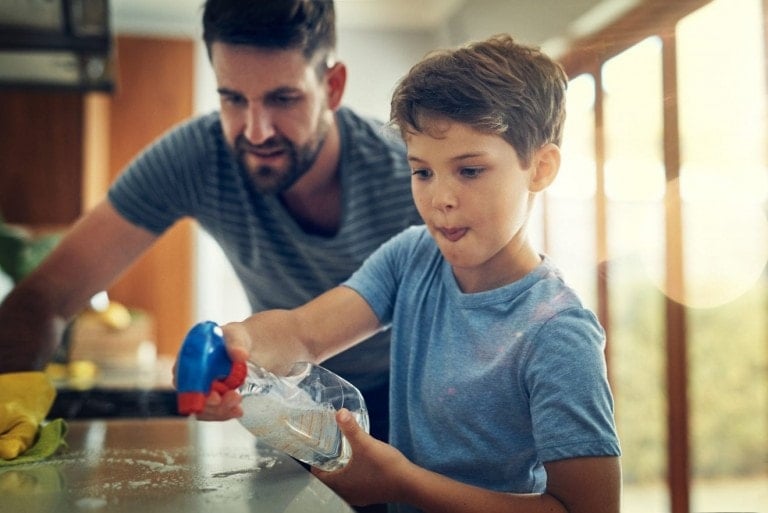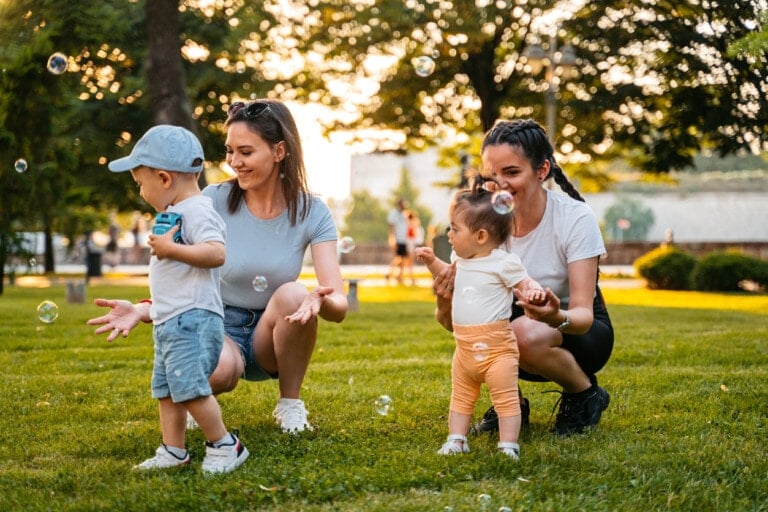As children, pretending is second nature. However, with imagination can come genuine fears. Knowing the difference between pretend and real is hard for most young children. Around age 2, our little ones start to use their imaginations during play, and they have difficulty distinguishing between fantasy and reality.2 This can mean our kids equally believe in fun or positive things (like Santa and the tooth fairy) as well as scary or worrying things (like zombies or monsters). As parents, we need to find ways to teach our kids the difference between what is pretend and what is real.
This year, you may have the “real versus pretend” conversation with your child. Especially during times of the year when make-believe characters present themselves. Like birthday parties featuring Disney princesses. Or holidays like Halloween, Christmas, and Easter.
Here are some great tips for making pretend versus real more straightforward for kids to understand.
The Difference Between Pretend and Real
Choose a Children’s Book to Help Explain
“What is REAL?” asked the Rabbit one day, when they were lying side by side near the nursery fender, before Nana came to tidy the room. “Does it mean having things that buzz inside you and a stick-out handle?”
“Real isn’t how you are made,” said the Skin Horse. “It’s a thing that happens to you. When a child loves you for a long, long time, not just to play with, but REALLY loves you, then you become Real.”
-The Velveteen Rabbit, by Margery Williams
The Velveteen Rabbit by Margery Williams is a great book to read with your little one if you’re looking for a jumping-off point to discuss pretend versus real. In this story, the boy’s stuffed bunny goes through two phases of “realness.” The first is when he becomes loved by the boy. The second is when a fairy turns the bunny into a live rabbit.
This is an excellent story for talking to a child about how they may feel about a pretend something they care about, like a stuffed animal. Explain to your child that a real kitty is breathing and alive, whereas their stuffed kitty is made of fabric and buttons. This can help them begin to grasp the concept of what is real and what is make-believe. You can also help them distinguish between fact and fiction by asking questions that draw on their knowledge.3 For instance, can a rabbit hop and eat carrots? Or can a rabbit walk around and talk? Ask them to share what they have witnessed or know about something to help them determine if it’s real or pretend.
Use Art to Explain the Concept
Another option is to present your child with two comparative images — for example, a cartoon illustration of a dog followed by a photograph of a real dog. Ask your little one what they think the difference is. This can help facilitate a conversation around how dogs are real animals, but we can also make a pretend version of them, like a picture.3
Don’t expect this concept to become solidified overnight. Toddlers constantly blend real and fantasy concepts during their daily activities. Imaginative play is a healthy aspect of early childhood development and is highly encouraged!3
Understand That Exploring Fantasy Is a Natural Part of a Child’s Development
You can nurture a child’s creativity and problem-solving through imaginative play. In a recent study, scholars explained the relationship between pretend play and problem-solving abilities in young children. They concluded that children are more able to problem-solve when they engage in imaginative play.3
As a former school teacher turned stay-at-home mom, I can see the benefits of imaginative play happening in my living room every day. Pretend play nurtures my child’s emotional development, social skills, and problem-solving.
For instance, my 2.5-year-old daughter, Addy, is interested in playing with dolls. At any given moment, I can find her wrapping her dolls in blankets, tucking them away in cabinets, or pushing them in her toy stroller. I see this translated when she interacts with her real baby sister, Sage. Addy uses the same language, tone of voice, and gestures she uses with the dolls. This pretend play with the dolls builds her empathy and compassion for her sister. This is awesome to see as a parent!
Debunk the “Scary” Side of Pretend
Sometimes, pretending can be scary. Monsters and zombies reign as some of Halloween’s prime characters. If your child feels scared of something pretend, try to debunk the myth by “unwrapping” it in front of them.
For example, if mommy or daddy dresses up in a Halloween costume that scares your toddler, engage your toddler in “taking off” the costume with you. This helps them see that mommy or daddy is underneath the layers and that the outfit worn is pretend.
Further, let your little one put on and take off their costume using the same dialogue about dressing up and pretending. Many preschool classrooms have a dress-up area where children can experiment with role-playing and imaginative play by putting on clothes and other accessories. Consider adding a dress-up space in your own home! Anything is game for a dress-up corner — from play doctor’s equipment to princess dresses to purses to dinosaur tails.
Play Dress-Up and Get into Character
Another great strategy to help your child learn the difference between fantasy and reality is giving them opportunities to make believe and get into character. You could get them to dress up, play with makeup, create or craft masks, etc. Help them develop characters or dress up, and then you can play pretend.4
You might fake being scared or worried about their character or play along with their story (perhaps they are a doctor and you are a patient) — but discuss it afterward. For example, you could say, “That was a great game! You played pretend that you were a teacher and I was in class learning. You aren’t really a teacher, but we used our imaginations to make the game fun!”4
Understand Your Child’s Mind Is Different Than Yours
It’s important to remember that our young children’s minds operate differently from our adult brains.5 They process information and emotions in ways unique to early childhood. Especially for children of preschool age (2-5), their minds are still developing.6 These concepts around the holidays can be confusing and even frightening.
At the same time, a young child’s ability to use their imagination is also one of their greatest gifts. It’s our job as parents and caregivers to gently guide them through this stage of development as they discern what is pretend and real — and to celebrate their imagination and creativity along the way.
































